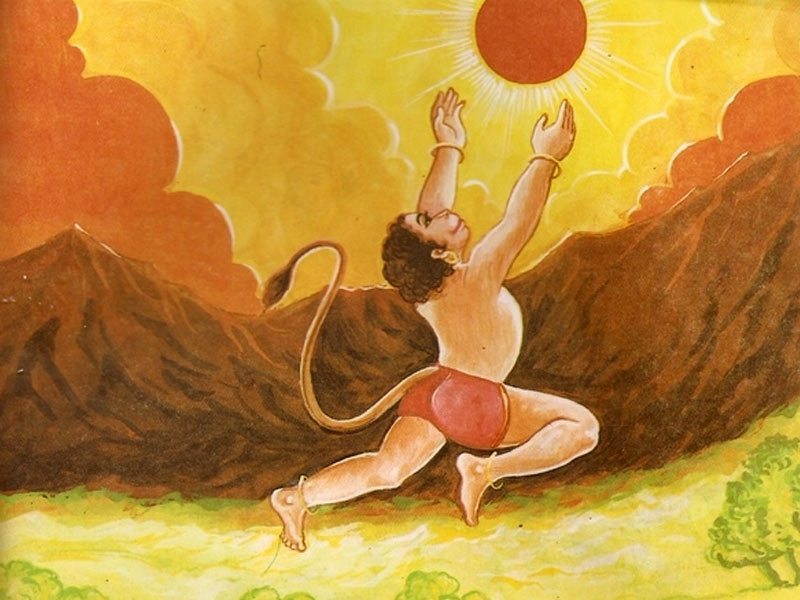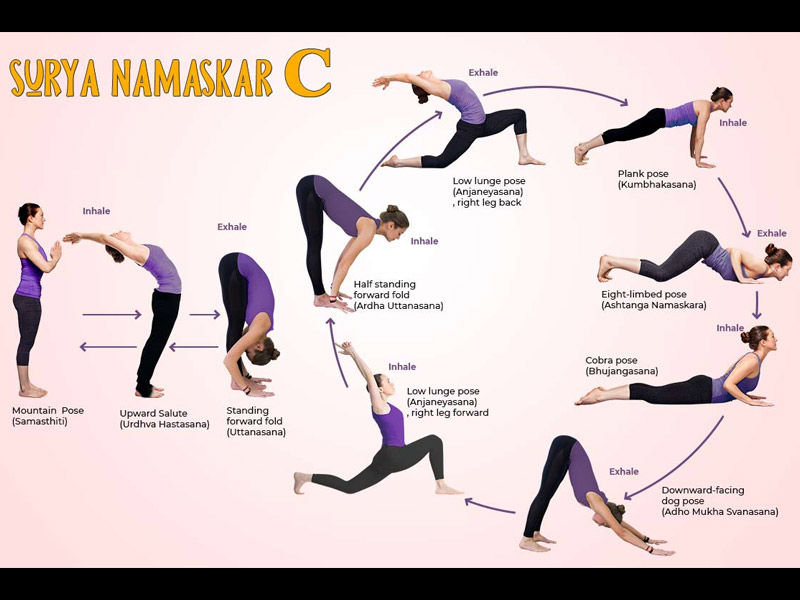SURYA NAMASKAR IS THE GOLDEN KEY THAT OPENS THE DOOR TO SERENITY, FULFILMENT, AND CONTENTMENT
The world begins with the illumination of light from the Sun. Sun is the symbol of hope that there is a ray of hope that lightens life once again after every dark phase of life. Sun or Surya is the heart of the whole world and is the creator of life. And to honor this holy creator, Surya Namaskar, is one of the most prominent ways.
It is believed that thousands of years ago, Yoga developed with the very beginning of civilization. Since then, Yoga has been a kind of tradition for Indians. Now, it has gained popularity all over the world with its magical and miraculous benefits. With lots of asanas and mudras, Yoga has a lot to offer. But Surya Namaskar or Sun Salutation is “The Ultimate Asana”
Of the Yoga. Surya or Sun has played a prominent role in history too. The most interesting of them was that when a boy mistook it as delicious mango and swallowed it. The boy was none other than the Lord Hanuman. And it is also believed that the moving trajectory of Lord Hanuman marked the origin of Surya Namaskar or Sun salutation.
With so many interesting facts and benefits, Surya Namaskar has become a very popular asana of Yoga among this entire universe. There are several mantras related to Surya Namaskar that people often want to know about. From its history, significance, and benefits to the right way of performing it, so many mantras are there rich in symbolic and physical benefits that you need to know about. And this is what this article is for!
SO, KEEP ON SCROLLING TO KNOW THESE MANTRAS OF SURYA NAMASKAR WITHOUT MUCH ADO AND ILLUMINATE YOUR LIFE WITH IT….
History

There is a huge controversy among the authorities over the origin of Surya Namaskar. Some believe that it originated during the Vedic times, especially In Rig Veda, as a ritual. The ritual involved the offerings of rice and flowers, liberations of water, and the enchanting of mantras. Whereas some believe that it has been originated by the Raja of Aundh in the early 20th century. However, the worship of the sun god was popular at the time Ramayana and Mahabharata too. According to Christian and Japanese beliefs, the sun god was worshipped by them too.
But to popularise this asana, the credit goes to Swami Adhyatmananda and later to Dr. Prakash C Malshe, a cardiologist in Haridwar. The scientifically researched and shared their knowledge and information among the people in different parts of the world.
THE CORRECT WAY TO PERFORM THE POSES WITH ITS SIGNIFICANCE AND MANTRAS
Twelve asanas are collectively performed during the Surya Namaskar with the enchantment of some mantras. Every asana is performed differently and has its own significance.
Pranamasana (Prayer Pose)
Way to perform:
- Expand the chests and relax the shoulders.
- Start inhaling with the upliftment of both the arms.
- Exhale by bringing both hands in front of the chests, making a typical Namaste pose.
Mantra: Om Mitraaya Namaha means the one who is friendly to all
Significance: It helps in maintaining the balance of the body and relaxes the nervous system.
Hasta Uttanasana (Raised Arm Pose)
Way to perform: Take a deep, long breathe while taking your hands gently backward.
Mantra: Om Ravaye Namaha means the one who is radiant and shines.
Significance: Helps in stretching and toning the muscles of the abdomen.
Hasta Padasana ( Hand To Foot Pose)
Way to perform:
- Start exhaling as you bent forward from the waist.
- Keep your spine straight and the palms in line with the feet.
- Try to touch your knees with the head while keeping your legs straight.
Mantra: Om Suryaya Namaha means the one responsible for generating the activity and illuminating the world.
Significance: It helps maintain the spine and the waist flexibility, stretches the hamstrings, and opens the shoulders, hands, and arms.
Also Read, 9 Yoga Poses for beginners to Increase Flexibility
Ashwa Sanchalanasna ( Equisterian Pose)
Way to perform: Again, breathe in, stretch your right leg back as far as possible, and look forward. Make sure that your right knee touches the ground, and your left foot is in the level of hands only.
Mantra: Om Bhaanave Namaha, means the bright one
Significance: Helps in the strengthening of the leg’s muscles and makes the neck and spine flexible. It is also good for constipation.
Dandasana (Stick Pose)
Way to perform: Now try to stretch your left leg back as you did earlier with the right one. Also, make sure that your hands stay perpendicular to the ground and now breathe out.
Mantra: Om Khagaya Namaha means the one who is moving all through the sky.
Significance: Helps in strengthening the arms and the backs. Improvises the posture and clams the mind.
Ashtanga Namaskara ( Salute With The 8 Parts Pose)
Way to perform: Take a pause and stop breathing.
Mantra: Om Poosne Namaha means the giver, nourisher, and the fulfiller.
SIGNIFICANCE- Releases the tension and anxiety.
Bhujangasana (Cobra Pose)
Way to perform: Now, breathe gently while raising your head and try to bend the spine as much back as you can.
Mantra: Om Hiranya Garbhaya Namaha, means the one who has the golden lustre and shine.
Significance: It helps in elevating the mood and refreshes the heart.
Parvatasana (Mountain Pose)
Way to perform: Now breathe out slowly, lower down your head and try to raise your body except the toes and hands as they will rest on the ground.
Mantra: Om Mareechaye Namaha means the one who spreads the light with its infinite rays.
Significance: Helps in increasing the flow of blood into the spinal region.
Ashwa Sanchalanasana (Equiestrian Pose)
Way to perform: Inhale and bring the right leg forward in the level of hands whole looking forward. Make sure that your left leg and knee touch the ground.
Mantra: Om Aadityaaya Namaha means Aditi’s son and mother of the cosmic divine.
Significance: Helps in toning and stretching abdominal muscles and increasing the flexibility of the leg’s muscles.
Hasta Padmasana ( Hand To Foot Pose)
Way to perform: Breathe out and bring your left leg forward as you did with the right one. And try to regain position no. 3.
Mantra: Om Savitre Namaha, the one who is the creator of life.
Significance: Helps in opening the arms, hips, and shoulders and also stretches the hamstrings.
Also Read, 5 Best Yoga Exercises To Fight Depression and Stress
Hasta Uttanasana ( Raised Arm Pose)
Way to perform: Breathe in a while, raising your hands over the head, and try to bend backward. Maintain position no. 2.
Mantra: Om Arkaaya Namaha means the one who is perfect for the appraisal and glory.
Significance: Helps in enhancing the breathing power of the lungs and increases the intake of oxygen.
Tadasana ( Standing Or Palm Tree Pose)
Way to perform: Now breathe out gently and come back to the mountain pose.
Mantra: Om Bhaskaraya Namaha means the one who gives wisdom and the cosmic enlightening.
Significance: Helps in improving the posture and relieves sciatica.

These were some of the basic mantras of Surya Namaskar that everybody must know.
To know More, click here

























